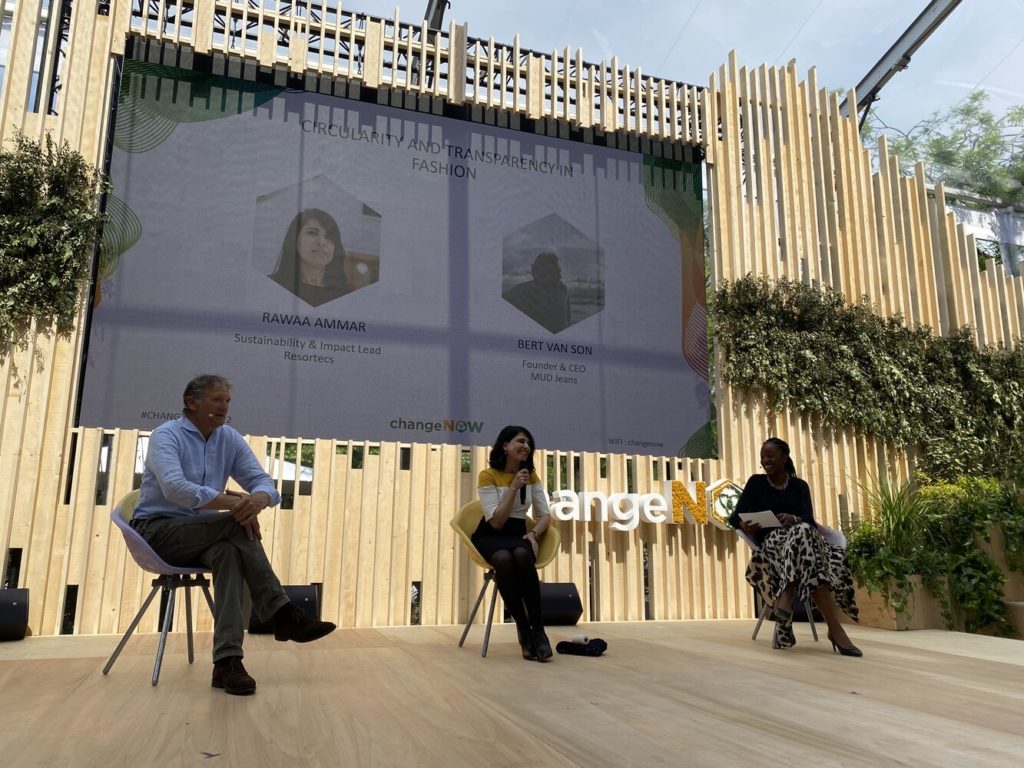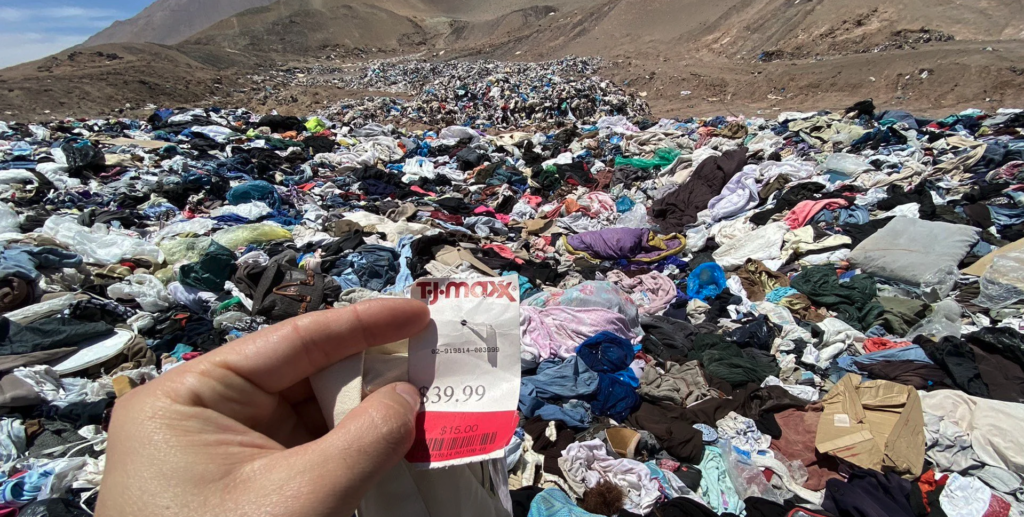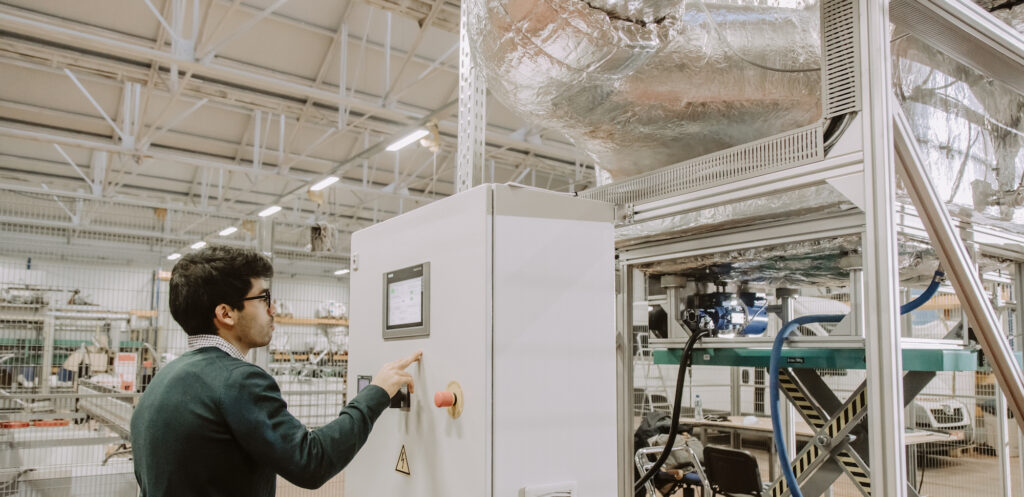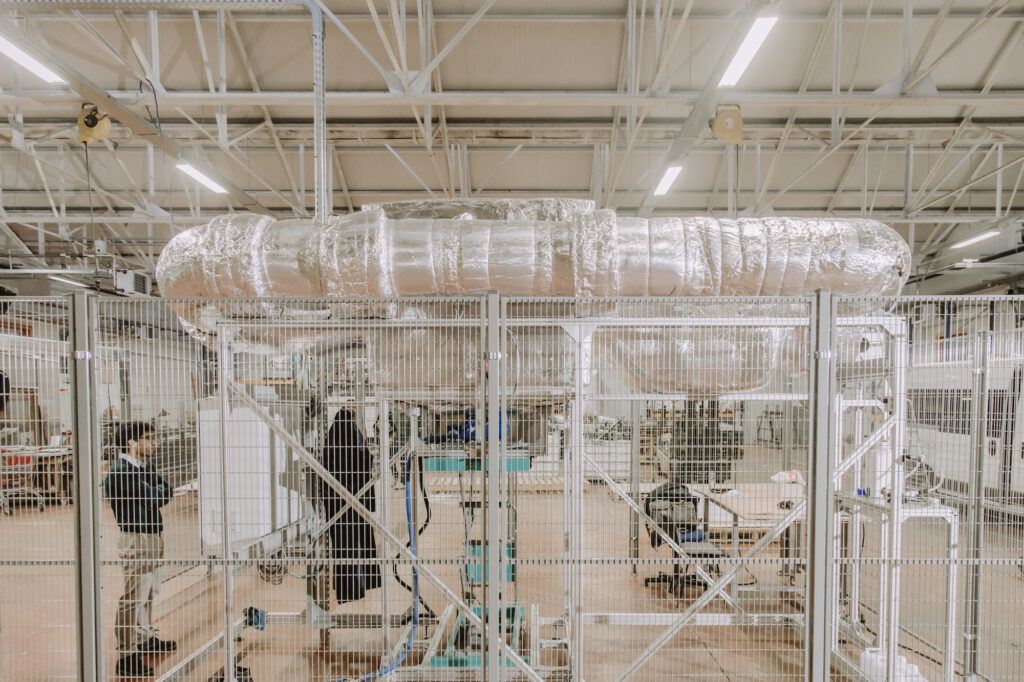Resortecs wins the Make it Circular Challenge Award by What Design Can Do and IKEA Foundation
Resortecs is one of the 13 winners of the Make it Circular Challenge!
On May 3, the 13 winners of the Make it Circular Challenge were announced. A total of 650 circular initiatives from over 20 different countries participated in the highly competitive challenge organized by the IKEA Foundation and What Design Can Do.
According to the challenge’s international jury, Smart Stitch™ and Smart Disassembly™ “represent the very best of design innovation and have the potential to make a significant impact in promoting sustainability and circularity.”
The Make it Circular Challenge
The competition was launched last year by WDCD and the IKEA Foundation to identify and support some of the world’s most promising circular innovations and enterprises. From hundreds of entries worldwide, 13 exciting visions for a restorative and regenerative future were selected, from seaweed packaging to waste-based textiles and upcycling marketplaces.
In addition to a €10.000 prize fund, the winners of the Make it Circular Challenge will have access to a six-month-long development program. The program was co-created by experts from the global Impact Hub network, providing the winning teams with the expert mentorship, guidance, and tools they need to grow their businesses and expand their impact on the world. The International Jury, consisting of 11 influential figures in circular design and entrepreneurship, including Bas van Abel (Fairphone), Corinne Gray (Unreasonable Group), Arthur Huang (Miniwiz), and Tamara Streefland (Built By Nature), was responsible for determining which of the 50 nominees had the most potential and would best benefit from this development program.
Selected by Secrid
Resortecs is also one of the three special projects to receive additional press and assistance. Secrid, a carbon neutral wallet producer, has chosen the 3 winning projects as part of their Impact Fund program, pledging to devote 1% of its revenue to bringing together designers and supporting their efforts to create products that enhance the planet’s natural and social equilibrium. By supporting Resortecs, Secrid aims to accelerate the development of the next generation of designers and promote change in our industries.

Resortecs, Tomorrowland, Paul Bowens, and Amandine David are the big winners of the Henry van de Velde Awards 2023 !
On Tuesday evening, February 7, all winners of the Henry van de Velde Awards received their coveted prize at Bozar in Brussels. In addition to the announcement of who won gold, silver and bronze within the 9 project categories, the winners of the 4 main prizes and the Public Award were also announced.
The jury of the Henry van de Velde Awards, one of the largest award ceremonies in Belgium, “believes in the impact and growth of the company and hopes that their innovative developments will now also find their way into the design world,” according to the statement about the award ceremony.

Henry van de Velde Award for Resortecs
The Henry van de Velde Awards are often referred to as the Oscars of design in Flanders. They are the oldest (this year is the 29th edition), best known and most prestigious design awards in Belgium. Winning an award, therefore, opens many doors, at home and abroad. The awards are organized annually by Flanders DC, but the selection of the winners is always done by a carefully composed jury. In addition to chairman Chris Baelus, members of the jury this year included Herman Konings, Katrien Laporte, Max Borka, Elien Haentjens, Ronald Bastiaens and Siegrid Demyttenaere.
Resortecs was considered by the jury a role model in applying the principles of ecodesign. In 2021, Resortecs was also crowned Changemaker of the Year at the Belgian Fashion Awards.
Other parties from the fashion and textile industry can be found among the other winners of the Henry van de Velde Awards. For example, Amandine David received the Young Talent Award. David specializes in traditional crafts such as weaving and pottery in combination with digital production. MyBlanket won Gold in the Consumer Awards category for a rain cover that wheelchair users can attach over their legs without assistance or standing up. No Time To Waste won the Design Research Awards category, which uses fluff, a by-product of the textile industry, and explores its possibilities.

The Henry van de Velde Awards are organized annually in Flanders DC and were made possible thanks to the support of the Flemish Agency for Innovation & Entrepreneurship (VLAIO), Bozar, Z33, the Public Waste Agency of Flanders (OVAM), the Flemish Environment Agency (VMM) and Bokrijk.
More information via https://www.henryvandevelde.be/
By Rawaa Ammar, Impact & Sustainability Lead at Resortecs.
What do floods caused by extreme rain in Brazil, a heatwave hitting Antarctica, and heavy thunderstorms engulfing Brussels in May have in common? These are only but a subtle sign that climate change is an imminent threat, and that we need to act now.
Observing the water cycle and following how it evaporates into the atmosphere, condenses into rain, and flows back into the sea is an ideal example of how Nature is relying on circularity to sustain life on Earth. To understand such cycles, scientists have always relied on certain parameters throughout the different stages of their formation. The same concept is applied in Life Cycle Assessment studies (LCA), one of my go-to resources to measure impact as a Sustainability & Impact Lead at Resortecs.
An LCA is an environmental management tool that provides a better understanding of a product’s impact on the planet at each stage of its life cycle. It is a very strong tool that can be misused if misconducted. A recent Forbes article explains why environmental impact assessments could potentially undermine sustainable fashion. But does that mean we need to stop conducting LCAs to verify a product’s environmental footprint (PEF)? How will we get the information, and how can brands be held accountable for their sustainability claims?
LCAs should be especially important for the fashion sector, one of the top polluting industries, responsible for 1.2 billion tons of CO2 equivalent every year.

Two weeks ago, I had the opportunity to touch on this topic during a ChangeNow panel discussion on circularity in the fashion industry. The one thing we all agreed on is the critical need for more transparency and information on all things fashion. Data holds great power and framing scientific findings as an LCA can provide brands, legislators, investors, and end-consumers with vital information on the PEF of any product in our closet or shopping cart. LCAs should be especially important for the fashion sector, one of the top polluting industries, responsible for 1.2 billion tons of CO2 equivalent every year.
Concretely speaking, however, the question remains: what kind of change(s) must the fashion industry adopt to help keep the global temperature increase below 2°C, as set by the Paris Agreement? It is obvious that sustainability should be reinforced in every manufacturing aspect – from material sourcing to product design – but little is discussed spoken about the importance of true circularity and efficient waste management. Currently, 34M tons of garments are dumped by the global north in deserts, seas, and incineration yards all over the world every single year. This cannot go on. It’s time for brands to move from the “thinking about it” stage and start implementing, today, the best-performing technologies that can critically reduce and transform the waste of tomorrow.

At Resortecs, we’ve conducted an LCA to compare the impact of different textile disassembly solutions (manual, mechanical, and Resortecs) coupled with (mechanical, chemical, and Purfi) textile recycling. Using all possible combinations of disassembly & recycling processes, we calculated the difference between the PEF of a circular pair of jeans and the PEF of a benchmark pair that would end up incinerated or in a landfill.
The results are not at all shocking: recycling is one of the golden opportunities to transform the future of fashion… but if not done right or, even worse, if disassembly is not part of the equation, the entire effort to make the textile supply chain greener could be wasted. Compared to incineration, the right technical choice, like adopting Resortecs to automate disassembly and facilitate industrial-scale recycling, can reduce CO2 emissions by up to 50%. The impact doesn’t stop there:
• water consumption can be reduced by 98%;
• textile waste can be decreased by up to 80%;
• costs linked to toxicity remediation can be reduced by over 200 euros (per pair of jeans!).
By now, you are probably wondering if brands will need to spend more to pick these low-hanging fruits? While the short answer is yes (no innovation is cheaper than the status quo before it becomes mainstream), the right answer is no!
Shifting from linear production to a circular model, such as the one made possible by Resortecs’ Smart Stitch™️ & Smart Disassembly™️, is a medium-term investment that has many financial advantages for different players along the textile supply chain. To list only the benefits for brands, adopting Resortecs allows fashion giants to:
• reduce their carbon footprint and avoid offsetting costs or CO2 taxation;
• secure a continuous stream of traceable, recycled, sustainable materials;
• save up to 15% in production costs;
• get an ROI as high as 300% with payback within the year;
• and, ultimately, reduce the consequences of fashion production on climate change!
What do you think – can numbers and LCAs eventually stop the fashion industry from destroying the planet? Let me know in the comments sections.
If you are curious to discover how the fashion industry can reduce its annual emissions by 204 M tons in the coming 10 years, download our externally-reviewed Life Cycle Assessment.
Resortecs’ innovation – the first of its kind – can process up to 1 ton of garments per day and is being tested by 30 major global fashion brands
Recently, images of the mountains of unsold clothing dumped in the Atacama Desert, in Chile, shocked the world. Each year, 34 million tonnes of textiles worth more than 400 billion euros are wasted by the fashion industry – which became a strategic target of the EU Green Deal. Behind these alarming figures are the costs and complexity of disassembly and recycling. When faced with stacks of unsold inventory, that might reach up to 40% of each season’s production, fashion brands turn to options easier and cheaper than recycling, such as landfills or incineration. If it’s up to Resortecs, however, this scenario is about to change.

The start-up presents its first thermal disassembly system in a demonstration event for the press, politicians, investors, and industry peers in Brussels on Thursday, 09/12. The system combines heat and mechanical force to disassemble clothes stitched with Resortecs’ heat-dissolvable threads. Inside the system – a globally-patented, high-tech version of an industrial oven – the clothes are exposed to specific temperatures, making the seams disappear automatically and allowing for easy material sorting and recycling.
“The system works with little to no oxygen inside. This preserves the fabrics’ quality and prevents the clothes from burning, even when they are submitted to temperatures higher than 200° C”, explains William Allouche, Technical Lead for Disassembly and the mind behind the system’s engineering. “We’ve made sure to develop a closed-loop system to preserve the heat produced for each batch of clothes for the longest time possible. This ensures energy recovery and generates way less CO2 emissions than other heat-induced processes.”
The thermal process is 5x faster than traditional disassembly methods and enables the recycling of up to 90% of the original fabric material, instead of the usual 48% obtained after manual or mechanical disassembly. Using data to prove the impact of its innovation, Resortecs ran an externally-reviewed life-cycle assessment which shows that the process adoption could help the fashion industry cut its CO2 emissions by 50% and reduce waste generation by 80%. If the entire EU production were thermally disassembled and recycled, the fashion industry could generate 60.3 million fewer tons of CO2 and save up to € 2.3 billion per year.

The version presented to the public is just a prototype. It can process up to 1 ton of textile per day and is being used to show first partners, such as the fast-fashion giant H&M and other 30 global fashion brands, how the start-up’s solution works. In the long term, it will be part of a network of thermal disassembly systems placed in recycling plants all over the world. The idea is to cover the globe with automatic thermal disassembly to speed up global textile recycling. Still in 2022, a second system with a larger processing capacity will come into operation. Together, both units will be able to prepare up to 13 tonnes/day of clothing for recycling, an unprecedented volume in the world.
“Everyone thinks of recycling, but no one looks at the biggest challenge to make it happen: disassembly. We saw an opportunity to optimize production while boosting up recyclability and sustainability, and we jumped on it” says founder Cédric Vanhoeck. “Brands have finally realized that there’s no way to continue producing and wasting textile as if nothing is happening with the planet. When we started 4 years ago, brands complained about the costs of sustainability, now they come to us because they understand that circularity is an investment.”
Join us.
Subscribe to our newsletter.
By subscribing, I agree with having my personal data stored and processed by Resortecs so I can receive future updates and marketing offers.
